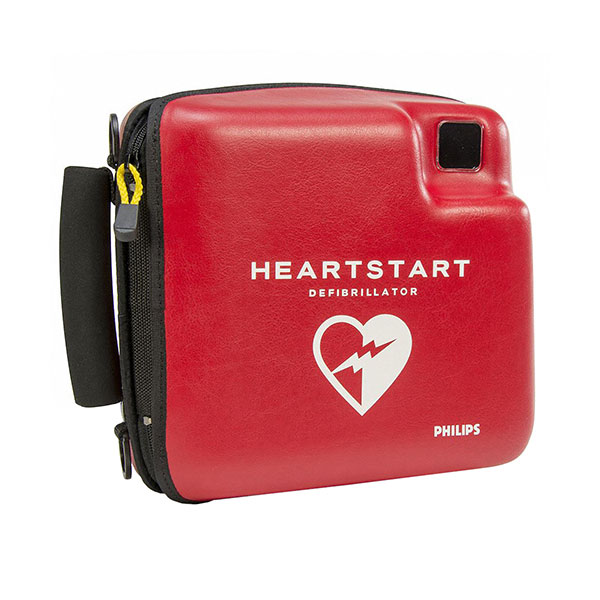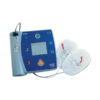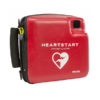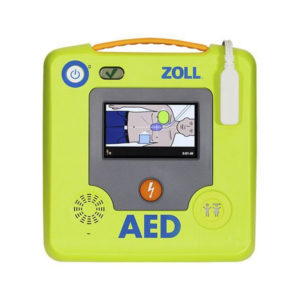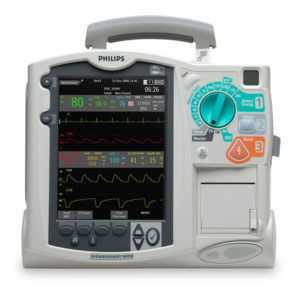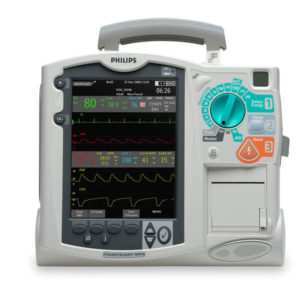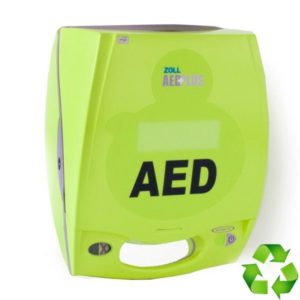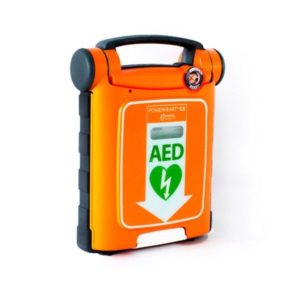Philips Heartstart FR2
Philips HeartStart FR2 Features
The Philips HeartStart FR2 is an automated external defibrillator (AED). The HeartStart FR2 is available in two models, one with an ECG and text display screen and one with a text display screen only. The FR2 series AEDs are designed specifically for use by first responders. They are intended to detect a shockable rhythm and instruct the user to deliver a shock if needed. It is also built with high-impact plastic, has few openings, and incorporate rugged defibrillation pads connector and battery interface.
$1,197.00
Philips HeartStart FR2 Features
The Philips HeartStart FR2 is an automated external defibrillator (AED). The HeartStart FR2 is available in two models, one with an ECG and text display screen and one with a text display screen only. The FR2 series AEDs are designed specifically for use by first responders. They are intended to detect a shockable rhythm and instruct the user to deliver a shock if needed. It is also built with high-impact plastic, has few openings, and incorporate rugged defibrillation pads connector and battery interface.
Portable, light AED.
Easy-to-use design and superior technology.
Automatically performs self-tests, which results in very little maintenance.
Internal memory stores summaries of information from incidents.
Non-rechargeable lithium battery.
Adult and infant/child pads.
Small and light design.
LCD Screen.
SMART biphasic waveform.
SMART Analysis – Analyzes a patients ECG and determines whether a shock should be delivered.
Philips Heartstart FR2 Features
Dimensions
Height: 2.6 in. (6.6 cm)
Width: 8.6 in. (21.8 cm)
Depth: 8.6 in. (21.8 cm)
Weight (With battery): 4.7 lbs (2.1 kg)
Battery
12 VDC 4.2 Ah, lithium manganese dioxide
Disposable, recyclable, long-life, primary cell
Capacity: 300 shocks or 12 hours of operating time
Shelf-Life: 5 Years
Display
High-resolution backlight LCD
Height: 2.3 in. (5.8 cm)
Width: 2.8 in. (7 cm)
Defibrillator
Waveform: Biphasic truncated exponential. Waveform parameters are automatically adjusted as a function of patient defibrillation impedance.
Energy: Using adult defibrillator pads: 150 J nominal (±15%) into a 50-ohm load. Using infant/child reduced-energy defibrillator pads: 50 J nominal (±15%) into a 50-ohm load.
Charge Control: Controlled by the Patient Analysis System for automated operation.
Charge Time: Typically less than 10 seconds. Charge time increases at the end of battery life.
ECG Display
Monitored Lead: ECG information is received from adult defibrillator pads in anterior-anterior (Lead II) position or from FR2 infant/child reduced-energy defibrillator pads in anterior-posterior position.
Frequency Response (Bandwidth): Nondiagnostic rhythm monitor 1 Hz to 20 Hz (-3 dB), nominal.
Sensitivity: 1.16 cm/mV, nominal.
Heart Rate: 30 to 300 bpm, updated each analysis period.
Data Card
Capacity: 8 hours of event and ECG data, or 60 minutes with voice recording.
Environmental Data
Operating Temperature: 32° F to 122 °F (0° C to 50° C)
Operating Humidity: 0% to 95% RH (Relative Humidity)
Standby Temperature: 32° F to 109° F (0° C to 43° C)
Standby Humidity: 0% to 75% RH
ECG Analysis System
Function: Evaluates the impedance of defibrillation pads for proper contact with patient skin, and evaluates the ECG rhythm and signal quality to determine if a shock is appropriate.
Protocols: Follows pre-programmed settings to match local EMS guidelines or medical protocols. The settings can be modified using the setup options.
Shockable Rhythms: Ventricular fibrillation (VF) and certain ventricular tachycardias, including ventricular flutter and polymorphic ventricular tachycardia (VT). The HeartStart AED uses multiple parameters to determine if a rhythm is shockable.
Asystole: On detection of asystole, provides CPR prompt at the programmed interval.
Pacemaker Detection: On detection of a pacemaker (in advanced mode or with M3848A ECG display cable), provides a screen display of PACEMAKER DETECTED alert, and M3860A includes pacemaker artifact in ECG display. In both models, pacemaker artifact is removed from the signal for rhythm analysis.
Artifact Detection: If electrical “noise” (artifact) is detected which interferes with accurate rhythm analysis, the analysis will be delayed until the ECG signal is clean.
Analysis Protocol: Depending on the results of the analysis, either prepare for shock delivery or provides a pause.


